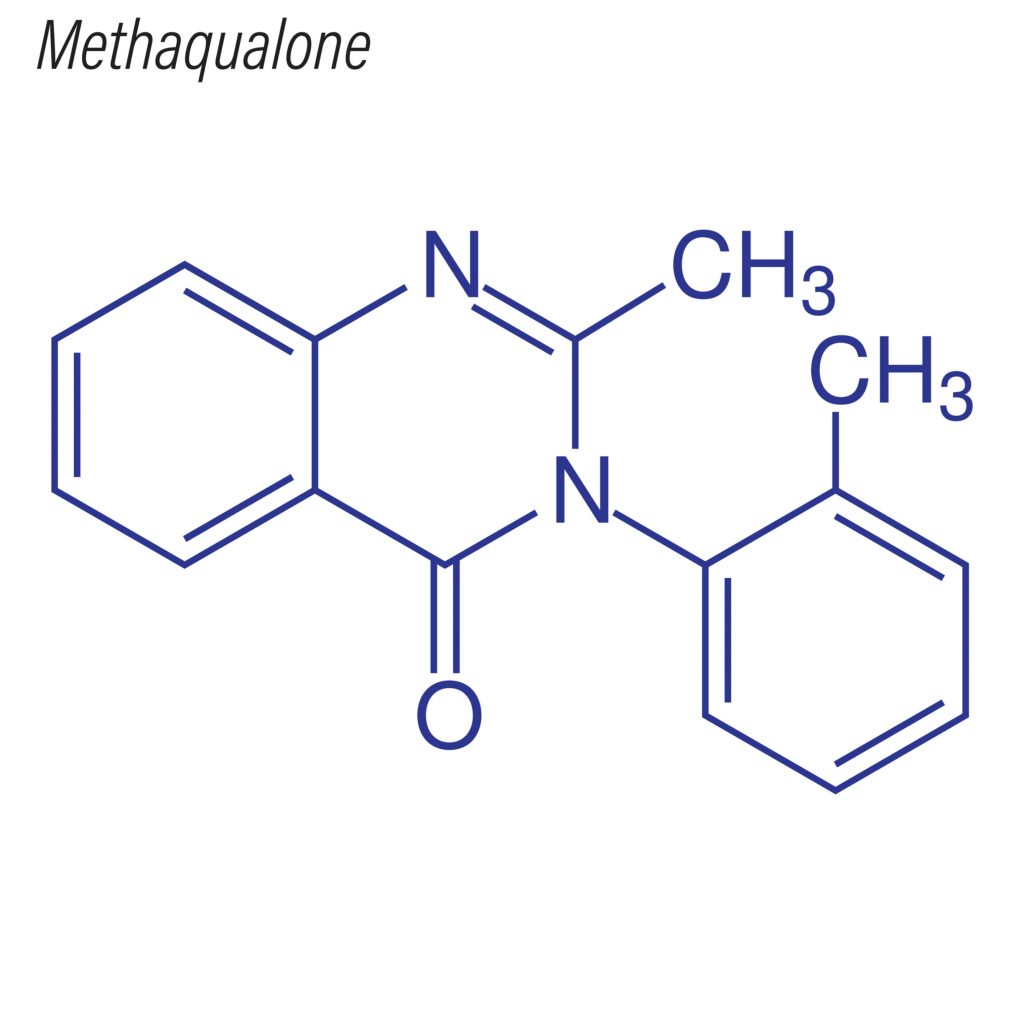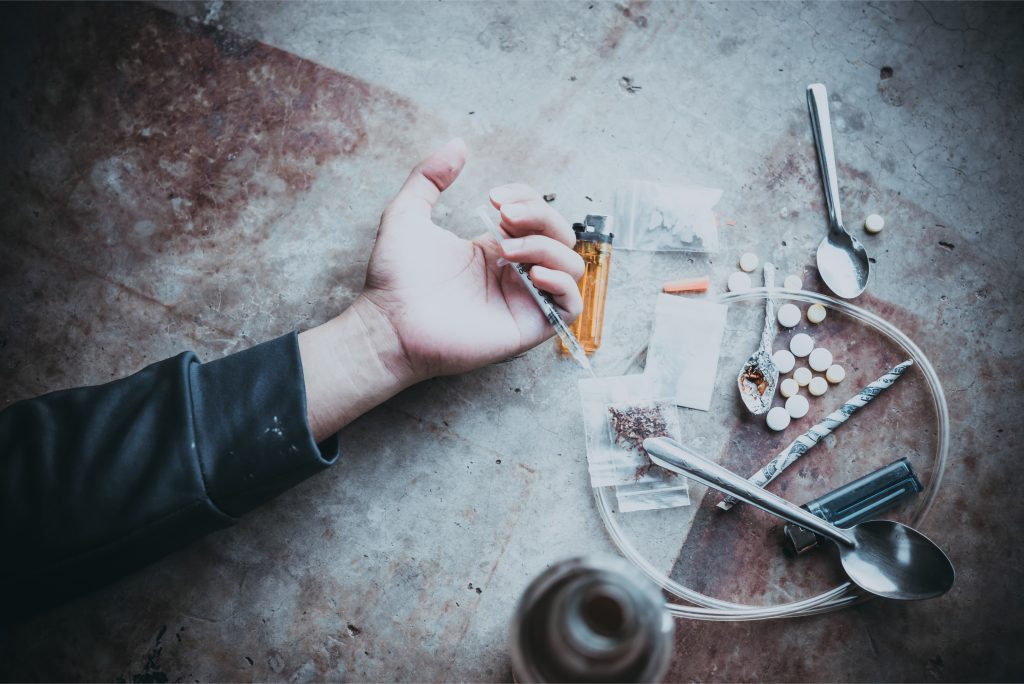It’s not uncommon for a drug to enjoy its time in the sun before being put on a back shelf for something else. But the complete removal of a drug is harder to do, since black markets find ways of continuing on. Such is the case with quaaludes, however, which all but disappeared, leaving only the most minimal of a black-market presence. Why was the US so intent on getting rid of this drug?
Quaaludes disappeared decades ago, but the reason why is hazy. Touted as a dangerous drug, the planet was nearly scrubbed of them, even as much more dangerous drug classes were/are allowed to be used. So why was it done? Read on… Make sure to sign up for The Psychedelics Weekly Newsletter to stay informed on everything important going on today, as well as to get access to exclusive deals on flowers, vapes, edibles, and much more! We’ve also got great offers on cannabinoids like HHC-O, Delta 8, Delta 9 THC, Delta-10 THC, THCO, THCV, THCP & HHC , which you can find by going to our “Best-of” lists!
What are quaaludes?
Officially called methaqualone, the term ‘Quaaludes’ is actually just a brand name, though the drug became known by that name, along with the names ‘mandrakes’, ‘mandies’, ‘ludes’, ‘disco biscuits’, and ‘sopers’. Methaqualone is a sedative hypnotic, meaning it makes a user tired, and allows them to fall asleep. It comes from the quinazolinone class of drugs. At higher doses, the drug can cause extreme mental confusion, loss of motor control, and the shutting down of the nervous system. Think Wolf of Wall street, yeah, you know the scene.
Methaqualone was synthesized for the first time in India by scientists Syed Husain Zahee and Indra Kishore Kacker, who were doing research to find a cure for malaria. The drug soon became big internationally, and in 1955 it was found that the compound had great sedative and hypnotic properties. In 1962 it was patented by chemical company Wallace and Tiernan in the US. By 1965 it was the most prescribed sedative medication in Britain, and in 1972 it was the sixth best selling sedative in the US.
During the 1970’s it started to garner a bad reputation, partly from its illegal manufacture for use on the black market. Methaqualone is Schedule II according to the UN Convention on Psychotropic Substances, which originally put it in Schedule I, before moving it to its current location in 1979. The US took it off the market in 1983, moved it to Schedule I in 1984, and officially banned it at that time.

In 1981, a statement by the US’s DEA claimed that methaqualone was second only to marijuana in terms of recreational drug popularity, and at that time approximately 90% of all the methaqualone being produced, was for the black market. This is important to know, because it means pharma companies and the government were not making money off of it. In fact, in 1980, the DEA claimed there were 20 million Quaaludes on the streets, and that that number would double in a year.
Methaqualone works with GABA receptors in the brain, much like both benzodiazepines and barbiturates (another class of drugs that all but disappeared), and promotes feelings of deep relaxation, euphoria, and behavioral inhibition, particularly related to sex. It creates physical tolerance with regular use, leading to more being needed and a higher chance of overdose. In the late 60’s and 70’s, it became a popular recreational drug in the US, UK, Australia, and New Zealand before being removed from markets in the 1980’s. It was still produced in Mexico til the early 90’s, and enjoys popularity still in the black markets of South Africa and India, but practically nowhere else.
Methaqualone came about when barbiturates were already starting to get a bad wrap for addiction and overdoses. When methaqualone was taken off the market, it was replaced by benzodiazepines, which became the new sedative darlings. Of course, those too have shown to be addictive and dangerous, as can probably be expected with any sedative. Somehow, though, they are allowed to remain when methaqualone was not.
How it is that Quaaludes so completely disappeared?
There are four things to consider here: 1) Quaaludes were out for at least 20 years and never had much of a death toll attached, and certainly nothing in line with the opioids of today. Meaning in terms of danger, whatever is said about Quaaludes, is lesser than the opioids issue by leaps and bounds. And not only do opioids enjoy legality despite a growing epidemic that claims upwards of 60,000 lives a year, but the US government wants to lower guidelines for prescribing them amid this.
2) If it was touted as being so incredibly popular, the death toll should have been massive for the level of danger spoken about. This creates a clear logical fallacy, as the drug was very widely used (apparently more widely than opioids), yet there weren’t bodies piled on the street. Meaning something in the danger story for removal doesn’t add up. In fact, a newspaper clipping from 1981 states that in 1980, there were 117 deaths from legally bought methaqualone in the US, and this considering it was the most popular drug next to weed. 60,000+ die a year from opioids alone now, so maybe Quaaludes weren’t the danger they were said to be.
Plus, 3), if they had the addiction rate that was spoken about, simply cutting people off would have resulted in a very big problem. But that didn’t happen. That line of reasoning – not wanting to force people into withdrawal – is used by the government to continue to push opioids despite the havoc they cause. So on one hand the government was fine with cutting people off from what they said was a highly addictive drug, but on the other, it refuses to do so with opioids, which have proven to be way worse. The fact that people could uniformly stop taking Quaaludes without a problem, shows their general low addictive nature, at least in comparison to alcohol, or opioids which cause users many problems upon cessation. One of the biggest complaints in terms of danger for Quaaludes, was not actually death, but that people made bad decisions. Let’s be realistic here, alcohol causes substantially more bad decision making, and much of the time with Quaaludes, the issue was that the person was consuming alcohol at the same time.

And 4), there are plenty of illegal drugs that never disappear, like heroin, crack, meth, and weed. And some, like heroin, meth, and crack, are significantly more dangerous. Yet it was monumentally important to the US government to get rid of this specific drug. How important exactly? Well, in order to get rid of it, the US didn’t worry about users, it worried about producers, and it worried about them all over the world.
In a classic case of the US overstepping boundaries and telling other countries what to do (which is essentially why cannabis has illegal status in so many places), the US went after anyone producing the powder all over the world and ‘convinced’ them to stop production. This is interesting, because technically, another country doesn’t have to care about US drug policy, or what the US wants to be available or not. Yet just like in tons of other cases – including weed – the US government forced its will, making sure production stopped under some idea that this drug was so dangerous.
Oh, and maybe a 5th thing to know… methaqualone was patented in 1962 in the States, meaning there were many years before that when any company or person could access how to make it. I expect the government was trying to avoid a situation like with ketamine today, where a loophole allows it to be prescribed for off-label use creating a gray market for ketamine therapy that the government can’t capitalize on. It also means that Big Pharma companies probably didn’t like it since they lost massive amounts of money to black market production. In fact, most money made off it, was made on the black market.
Current day
Today, the not-as-dangerous Quaaludes have all but disappeared, with the much more dangerous opioids and benzodiazepines showing what really dangerous drugs can do in terms of death counts. And even with the knowledge that the drug ketamine can treat issues like pain without causing the same addiction or overdose threat as opioids, it remains a suppressed industry. This doesn’t stop clinics from popping up offering treatments outside of regulation under off-label use, though. Well, guess what? That’s what was happening with Quaaludes before they disappeared.
Yup, that’s right. Clinics were set up that handed out prescriptions as high as the medical limit would allow. Called ‘stress clinics’, these operations would provide prescriptions without the user having to go to their GP – also like with ketamine, where a user can simply go to a clinic to get a prescription by the attending doctor there. And if today’s ketamine industry is any indication, the government did well for itself by moving methaqualone to Schedule I, thereby alleviating the fear of an off-label market.
So Quaaludes, the drug that got everyone to relax in the 60’s and 70’s, have disappeared, and the internet seems to be scrubbed of any useful information. What can’t be found, are any kind of death or injury statistics that can legitimately back up the idea that this drug was so dangerous it had to be removed entirely. What kind of death and injury statistics do exist? The above mentioned article pointed to 117 deaths from 1980. Here’s another statistic that makes clear how much of a smear campaign was built around Quaaludes: 246 methaqualone-related deaths in Dade County Florida in the 11 years from the beginning of 1971 to the end of 1981.

Considering that county had between one and two million people during those years, it suffices to say that 246 deaths over 11 years is like saying something is safe (let’s remember Dade is the home to Miami). In comparison, in just 2019, that same county had 300 drug overdose deaths, which equals 11.04 per 100,000 residents. That was just one year, and the majority were from opioids. Here’s another comparison to consider: each year approximately 458 people in the US die from acetaminophen (Tylenol). It also leads to 56,000 emergency room visits every year and 26,000 hospitalizations every year as well. Which means if you think about it, Tylenol is more dangerous than Quaaludes. Maybe the US should protect us from it.
Conclusion
The question of why Quaaludes disappeared is an interesting one, mainly because it seems to be an example of something growing in popularity, of the US government not being able to control it (or benefit from it), of the US government then launching smear campaigns about it, followed by the US government outlawing it. Much like with cannabis. If anything, Quaaludes seem to be less dangerous than opioids or benzodiazepines (the latter of which were responsible for approximately 300 deaths from 2019-2020 in 32 states and DC only.)
The whole thing starts to make me wonder if methaqualone was actually a worthwhile medication, as the medical industry and government so rarely act to the benefit of consumers. The opioid-ketamine conundrum is a fantastic example of this, and the way the two entities work together to keep people off the better option in favor of a more dangerous one. I wonder if the government will attempt the same thing with ketamine as it did to make sure that Quaaludes disappeared. Illegalize it, demonize it, and then go after every producer to eradicate the market. Stay tuned to life to find out.
Welcome to the site! Thanks for stopping by CBDtesters.co, the preeminent internet location for all cannabis and psychedelics-related news that’s important today. Read thru the site regularly to stay knowledgeable on the quickly-moving landscape of legal drugs and industrial hemp, and remember to sign up for The Psychedelics Weekly Newsletter, so you’re never behind on what’s going on.
Disclaimer: Hi, I’m a researcher and writer. I’m not a doctor, lawyer, or businessperson. All information in my articles is sourced and referenced, and all opinions stated are mine. I am not giving anyone advice, and though I am more than happy to discuss topics, should someone have a further question or concern, they should seek guidance from a relevant professional.









